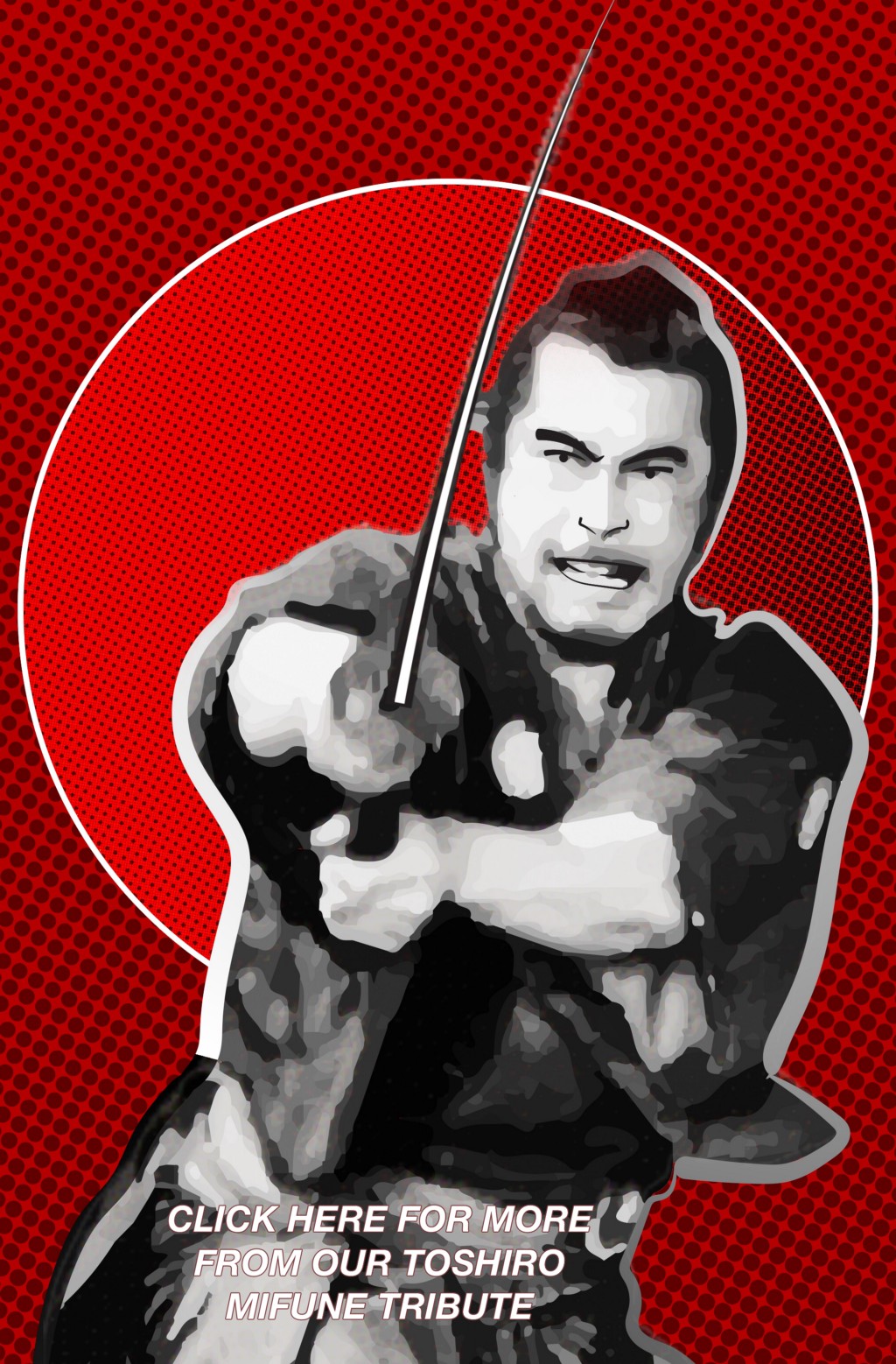Looking back at a showdown between two of the 1960s’ roughest men of action.
What’s the worst that could happen? Desperate to parade his drunken impression of his favorite samurai to the man himself, Lee Marvin convinced director John Boorman to travel to the Rock Islands of Palau to film his ultimate showdown with Toshiro Mifune in 1968’s Hell in the Pacific. Marvin idolized the star of Seven Samurai, and he often took the opportunity at parties to assault his guests with his very worst Yojimbo. Having recently scored an Academy Award for Cat Ballou, and coming off a trilogy of success with The Professionals, The Dirty Dozen, and Boorman’s own Point Blank, Lee Marvin was now commanding a million dollars a picture. This was probably the only moment in time where he could have convinced a studio to finance this two-person, multi-lingual, non-subtitled, action-less war film. Did the Marvin truly believe he had a hit on his hands, or was this simply his only opportunity to geek out with one of cinema’s true titans?
Hell in the Pacific chronicles the mini-war raged between a fallen American pilot and a marooned Japanese Navy Captain on a lump of rock in the middle of the ocean. Over the course of the film, both combatants trade places being the cat and the mouse. The World War II microcosm inevitably fading away as each man chooses human connection over his country’s conflict.
Both Marvin and Mifune were veterans of the Pacific theater. At 18 years of age, Marvin left school for the Marines, and on June 18th of 1944 Marvin was shot during the Battle of Saipan (an account of just how he received his Purple Heart can be read in Pam Marvin’s biography, Lee). Mifune served as a photographer in the Japanese Air Force, and spent a few years as a petty officer distributing sake to Kamikaze pilots.
Filled with a tremendous desire to honor the fallen, Mifune convinced Marvin to lay a ritualistic wreath at Peleliu before filming could begin. According to John Boorman’s biography, Adventures of a Suburban Boy, Marvin was greatly disturbed by the ceremony, and it sent the Marine deep into the bottle that night. This was simply the beginning of a tumultuous and cantankerous shoot.
The movie opens as dawn exposes the silhouette of a tiny chip of an island. You get the impression that you could easily toss a baseball from one side to the other. This is not LOST. This is not an island filled with mysteries and hatches. This is a stage fit for Shakespeare, this is a tennis court, this is a battlefield. Toshiro Mifune rises from cross-legged slumber, performs the morning ritual of scanning the horizon, and discovers Lee Marvin’s raft smashed upon the rocks. He hears Marvin screaming from his sleep, and goes on the hunt for the interloper.
Production of the film began with shooting these minuscule introductory tasks. No fuss, no muss. However, when it came to filming the first physical encounter between the two leads, director John Boorman went to war with Toshiro Mifune. The actor had been given a script by Shinobu Hashimoto, who had been brought on to inject an authentic voice to the Japanese dialogue, but that version was apparently reworked as a comedy to spite Boorman. The Too-Many-Cooks Syndrome of Hollywood poisoned Hashimoto, and he escaped to Las Vegas where he rewrote Mifune’s version of the script. The Navy Captain was now in full jester mode, and Mifune refused to play the character any other way. After a series of back-and-forth battles with his interpreter, Boorman convinced Mifune that his script was in error, but Mifune had already found his Navy Captain’s voice.
Hell in the Pacific offers the Mifune fan quite a bit in terms of range. As the Captain’s residency on the island becomes more and more permanent, and his methodically pressed clothing slowly tears down to little more than a wild man’s loin cloth, Toshiro Mifune is able to shift the reserve of The Bad Sleep Well into the histrionics of Seven Samurai’s Kikuchiyo. The Captain is allowed to play the cock-of-the-walk victor one second, the slave the next, the friend in another moment, and straight back to proud bastard. Right up until the last moments of the film, you’re not quite sure how you’re supposed to feel about either of our two heroes. It’s a doomed cycle of emotions in which a united Earth seems forever impossible, let alone simple friendship.
John Boorman nearly lost his mind trying to wrangle his actors, the weather, and the coral infection that burrowed into his knee after a freak dash upon the ocean floor. The studio was gearing up to replace him, after getting the approval from Lee Marvin, but Mifune would not let his director leave the shoot disgraced. Mifune demanded that Boorman stay on. The two egos might nearly have come to blows on set due to character interpretations, but Mifune saw it as dishonorable to continue the job for another man.
Lee Marvin had convinced John Boorman to join up, but at the end of the day, he was there for Mifune. Both men were roughly the same age as the other, but Marvin was utterly giddy to be the only other actor sharing the stage with Mifune. He never got to draw swords with Yojimbo, but during a nightmarish What If attack, Marvin did get his samurai execution at the hands of Mifune’s beach staff. For a Kurosawa fanboy, Hell in the Pacific is fantasy made reality, and he certainly learned a few more moves to mimic at cocktail parties.
For Toshiro Mifune, this is his closest form of success with American audiences, and it was a total flop. He would later appear in odd genre fare like Red Sun, Shogun, and Steven Spielberg’s even more catastrophic 1941, but none of those films would offer him the narrative meat like Hell in the Pacific. Yet, it may have been too close since the end of the war. Audiences still craved the life and death hostilities between the Axis and the Allies. The Tower of Babel tragedy of one man failing to teach another man to play catch on the beach holds less attraction than the usual damn dirty Nazi story. We were not ready to hear Lee Marvin’s pilot casually dismiss combat as “Win a few, loose a few.” That’s just too Vietnam for a 60s era World War II flick.
Related Topics: Toshiro Mifune




